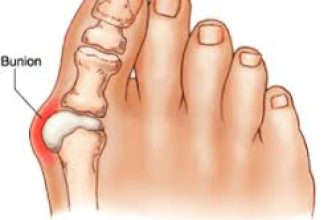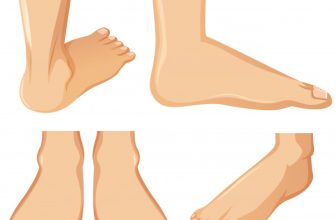Bunion pain is an ongoing source of pain that can affect your mobility and general quality of your life. Bony protrusions located at the bottom of the toe’s big one appear due to a misalignment of the joint. Although non-surgical treatment is often the first choice but surgery is a viable alternative when conventional measures do not offer relief. This article delves into the world of bunion surgery and outlines the various procedures that podiatrists use to treat the common foot problem.
Understanding Bunion Deformity
Before undergoing surgery, it is essential to identify the root reason for bunions. Big toe Joint (metatarsophalangeal joint) connects the big toe (hallux) to the metatarsal bone in the midfoot. In a healthy foot the big toe slants straight ahead. With bunion, a gradual misalignment takes place. The metatarsal bone nearest the big toe inclines towards the outside, while the larger toe itself bends inwards, forming the bony bump we know as the bunion. The misalignment could cause irritation to the adjacent soft tissue ( bursa) that can result in pain, inflammation and difficulty putting on shoes.
When Surgery Becomes Necessary
Podiatrists, or foot and ankle specialists, generally suggest non-surgical solutions such as padding, larger shoes, orthotics and anti-inflammatory medication for managing bunion. But, surgery is an option when:
- It is a persistent pain that hinders daily activities If you experience pain that hinders your ability to stand, walk or engage in your certain activities, surgery may be the best option.
- The bunion is extremely painful: Large and prominent bunions may become a issue for appearance and, more importantly they can result in considerable pain and pressure.
- The joint’s mobility can be restricted: In severe cases bunion deformities may limit the movement of the big toe which can affect gait and balance.
- The non-surgical options haven’t brought alleviation: If you’ve exhausted alternatives to improve your condition surgical procedures can be a way toward free mobility without pain.
Bunion Surgery: A Spectrum of Options
Podiatrists can perform a variety of bunionectomy procedures which are each customized to the degree of the deformity as well as the specific needs of each patient. Let’s look at some of the most common bunionectomy procedures:
- Cheilectomy It is a minimally-invasive process that is used to remove the prominence of the bony part of the bunion. It’s appropriate for moderate to light bunion with only minimal joint involvement.
- The Exostectomy is performed with Akin Osteotomy: This procedure involves removal of the bony bump and realigning the big foot by making an osteotomy wedge (cutting) at the superior the phalanx (first large toe’s bone). This procedure is a way to correct the angular deformity. It is typically used to treat moderate bunions.
- Chevron, or Lapidus Bunionectomy These procedures require more extensive bone cuts in order to restore the metatarsal bone as well as that of the toe’s big one. They are appropriate for serious bunions that have significant joint misalignment. When a chevron is an osteotomy, the metatarsal bone is cut into an V-shape. A Lapidus procedure is cutting a zig-zag.
- Arthrodesis (Joint Fusion): If the bunion is caused by arthritis that is severe in the joint, Joint Fusion surgery may be suggested. The surgery permanently places that big toe joint into an ideal position, which eliminates discomfort and increase stability.
Surgical Process and Recovery
Bunionectomy procedures are generally carried out on an outpatient basis under general or local anesthesia. The surgical method chosen will dictate the exact details for the process. In general, the podiatrist makes an incision on the bunion and realign the soft tissues and bones, and then secure them using pins, screws or sutures. After surgery the bandage or splint is put on to help stabilize the foot.
The process of healing from bunionectomy typically lasts for some time. Patients are usually advised to avoid weight bearing on to the foot affected for couple of days and gradually increase weight bearing when they feel comfortable. It is possible to recommend physical therapy to improve strength and increase mobility within the foot. The complete healing process can take from to a few months, based on the extent of the operation.
Benefits and Risks of Bunionectomy
Bunionectomy provides significant benefits to patients suffering from persistent bunion pain and restrictions because of the deformity. Benefits include:
- Pain relief
- Better joint mobility
- The capability to wear shoes with no discomfort
- Improvement in gait and balance
But, like any procedure, there are hazards to take into consideration. They include:
- Infection
- Bleeding
- Nerve damage
- The bunion is recurrence
- A swollen joint in your big toe
Choosing the Right Podiatrist
Selecting a board-certified podiatrist perth who has years of experience performing bunion surgeries is essential. In the initial consultation, talk about your particular issues, medical history, and your desired outcome. The podiatrist will carefully look at your foot, and assess
Conclusion
Bunion treatment Perth, although not something that should be made lightly could provide significant relief and a better living conditions for those suffering from chronic pain in the bunion. If you are aware of the various surgical options and talking with your doctor, you are able to make an informed decision regarding the most appropriate course of treatment for your particular requirements.
Living with Post-Operative Foot
After bunionectomy perseverance and dedication to healing are essential. The first few weeks will be a mix of managing swelling, pain and gradually gaining weight according to your podiatrist’s instructions.
Exercises for physical therapy will be a key factor in helping to regain strength and flexibility of the foot that is affected. It is important to be aware of your expectations as the complete healing process can take months, and some swelling that could last for up to 1 year.
Long-Term Management and Preventing Recurrence
After you have fully recovered, taking preventive measures will help you maintain the advantages of your operation and decrease the risk of a future bunion developing. The use of wider-fitting shoes that conform to your foot’s shape without putting pressure on your bunion is essential.
Choosing shoes that provide an arch-support that is strong and a wider toe box can also aid in ensuring proper foot alignment. Orthotics can be helpful in certain instances. Being healthy and taking part in regular physical exercise will help keep your feet healthy and flexible.
A Brighter Step Forward
Bunion surgery is an important investment in your foot’s overall health and well-being. A consultation with a qualified podiatrist to get an extensive evaluation and discussion of possible treatment options is the initial step to a pain-free and healthy future. Keep in mind that the procedure for a bunion is not only concerned with aesthetics, it’s about recovering mobility and confidence as well as the ability to lead the active lifestyle you want to live without any limitations.
Through working together with your podiatrist, and adhering to a strict recovery plan You can be in control of your feet’s health, and walk with confidence into a future that is free of bunion pain.





